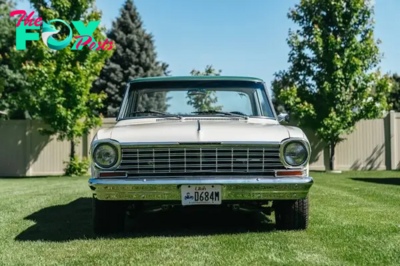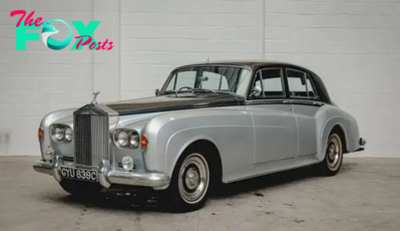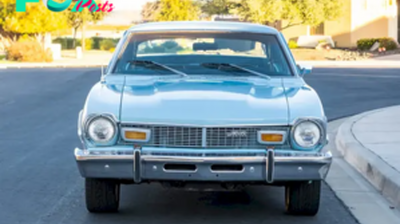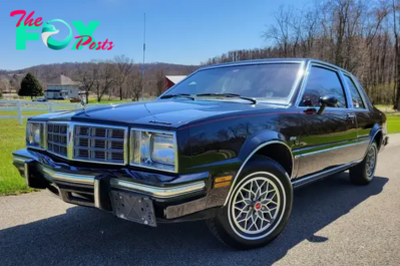Entertainment
DQ “Embarking on a Journey Through the Golden Era of Sports Cars with the Stunning 1957 BMW 507”
In the world of automotive design, certain cars stand as icons of beauty, style, and innovation. The 1957 BMW 507 is undeniably one such masterpiece, embodying the essence of classic Sports cars. Born in the midst of post-war Germany, the BMW 507 was a symbol of revival and elegance. With its striking design, luxurious interior, and potent performance, this car has become a revered classic in the realm of automotive History. In this article, we will explore the rich History, design philosophy, driving experience, and enduring legacy of the 1957 BMW 507.
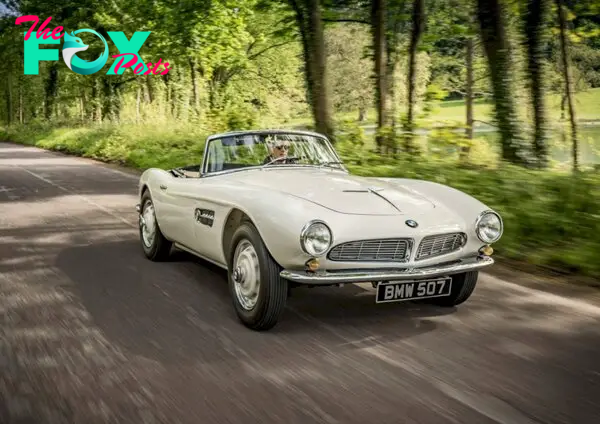
1. Design and Exterior
The BMW 507 featured a stunning and timeless design, created by renowned designer Albrecht Graf Goertz. It had a long hood, a sleek and curvaceous body, and elegant proportions. The car’s lines were smooth and flowing, giving it a sense of athleticism and grace.

Graceful and Curvaceous Lines
The 507 boasted a beautiful and flowing design that exuded sophistication and sportiness. It featured graceful curves, well-sculpted body panels, and a balanced overall shape. The car’s lines were clean and uncluttered, giving it a sense of timeless beauty.
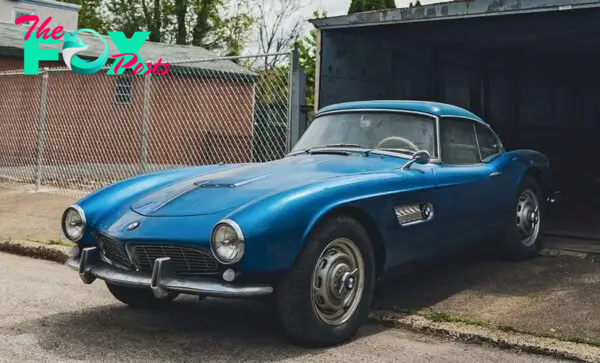
Roadster Layout
The 507 was a two-seater convertible roadster, designed to offer an exhilarating open-top driving experience. It featured a low-slung profile, emphasizing its sporty nature. The absence of a fixed roof enhanced the car’s aesthetic appeal and highlighted its focus on open-air enjoyment.
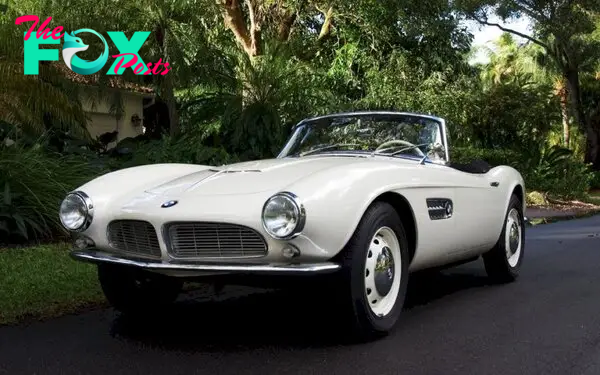
Iconic Kidney Grille
The BMW 507 featured the brand’s signature kidney grille, which has become an iconic design element seen in many BMW models throughout History. The grille on the 507 was integrated into the front fascia and complemented the car’s overall styling.

Chromed Accents
The exterior of the 507 featured several chromed accents, such as the front grille, door handles, and trim pieces. These elements added a touch of elegance and highlighted the car’s premium status.
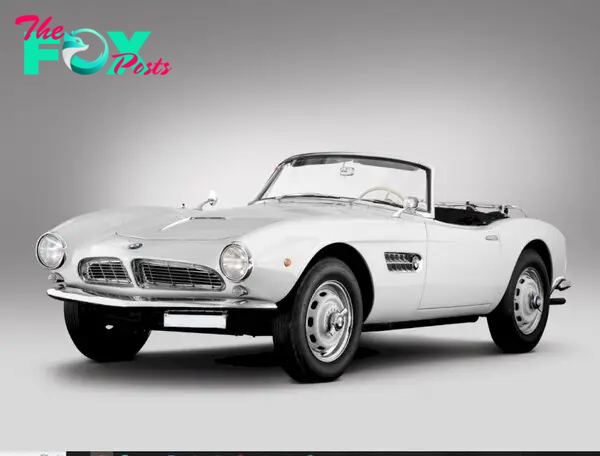
Long Hood and Short Rear Deck
The 507 had a long, sweeping hood that conveyed a sense of power and performance. It housed the potent V8 engine and emphasized the car’s front-engined, rear-wheel-drive layout. The rear deck was shorter in comparison, further enhancing the car’s dynamic proportions.
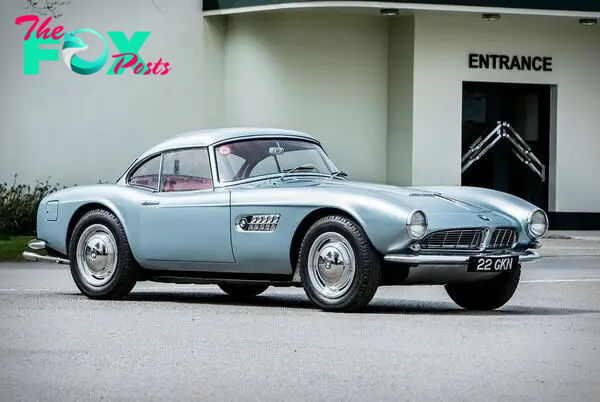
Paintwork Options
The 507 was available in a variety of exterior color options, ranging from classic shades like white, silver, and black to more vibrant and eye-catching colors like red or blue. The paintwork options allowed customers to personalize their vehicles according to their preferences.
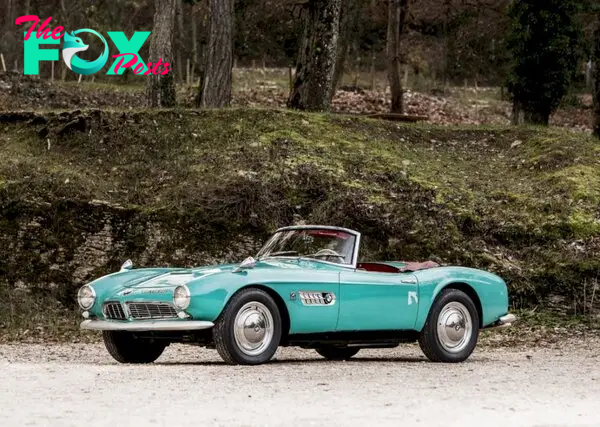
2. Engine
The 507 was powered by a 3.2-liter, all-aluminum V8 engine. This engine was equipped with dual carburetors and produced approximately 150 horsepower, delivering a smooth and enjoyable driving experience. The engine was mated to a four-speed manual transmission.

Configuration and Construction
The engine featured a V8 configuration, with a 90-degree angle between the cylinder banks. The cylinders were cast in iron, and the engine block was made of aluminum alloy, which helped reduce weight.
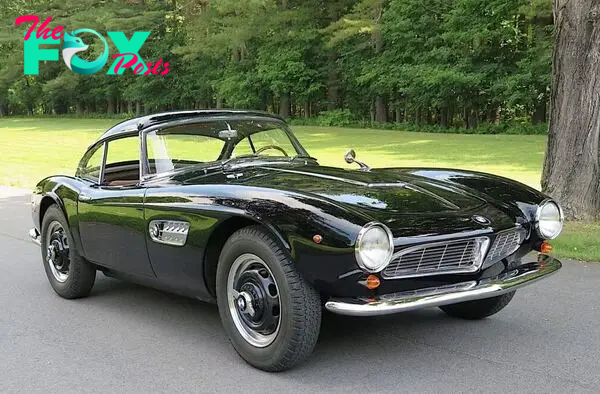
Power Output
The 3.2-liter V8 engine produced approximately 150 horsepower. While this may seem modest by today’s standards, it provided ample power for the 507’s lightweight construction and delivered a spirited driving experience.
nshOZH0OFrj3Q164ZxyRizJx3uskhIzKBO
Dual Carburetors
The engine was equipped with two Zenith dual-barrel carburetors. These carburetors ensured optimal fuel-air mixture delivery to maximize power and throttle response.
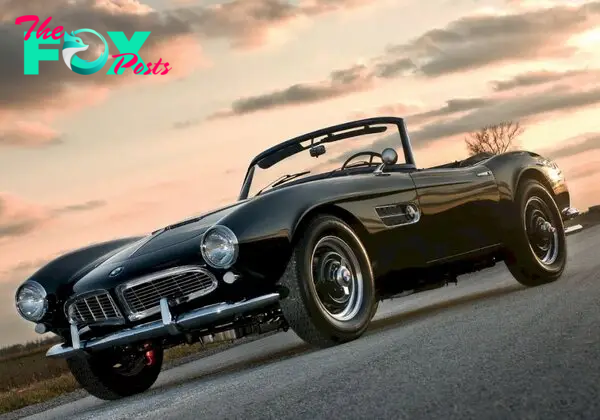
Performance
The BMW 507 offered impressive performance for its time. It could reach a top speed of around 122 mph (196 km/h) and could accelerate from 0 to 60 mph (0 to 97 km/h) in around 10 seconds. These figures showcased the engine’s power and the car’s sporting capabilities.

Exhaust System
The 507 featured a well-engineered exhaust system that not only enhanced the engine’s performance but also produced a sonorous exhaust note, further adding to the driving experience and the car’s overall character.
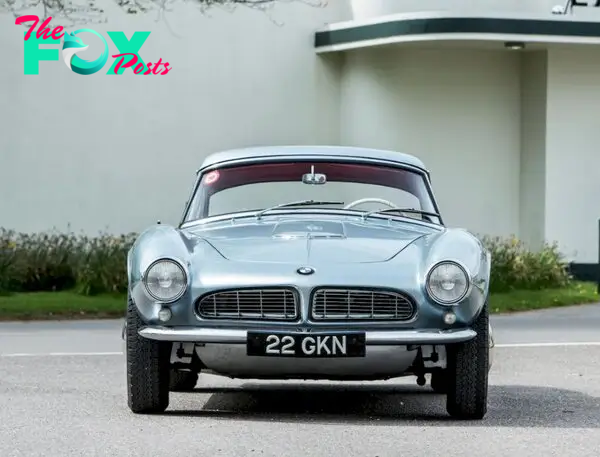
Manual Transmission
The engine was mated to a four-speed manual transmission, which provided smooth and precise gear changes. The transmission was well-matched to the engine’s power delivery and allowed drivers to fully enjoy the car’s performance capabilities.
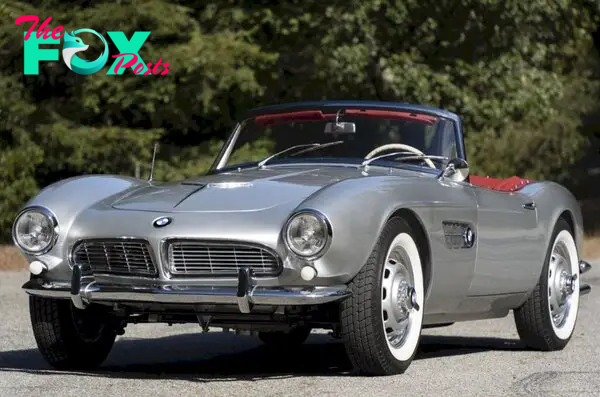
3. Performance
The BMW 507 offered impressive performance for its time. It had a top speed of around 125 mph (200 km/h) and could accelerate from 0 to 60 mph (0 to 97 km/h) in just under 10 seconds.
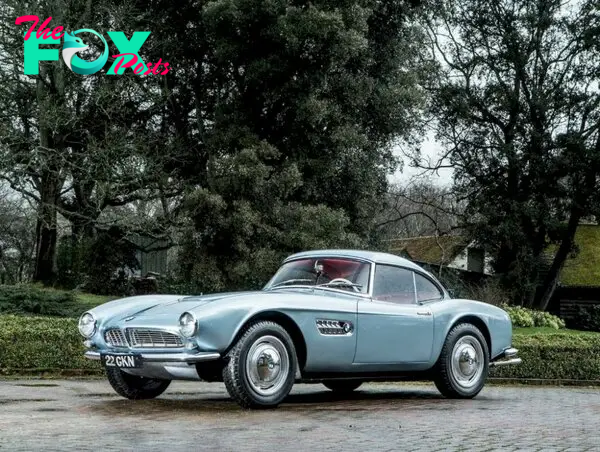
Acceleration
The 507 could accelerate from 0 to 60 mph (0 to 97 km/h) in around 10 seconds. While this figure may seem modest by today’s standards, it was considered respectable for a sports car of the late 1950s.

Top Speed
The BMW 507 had a top speed of approximately 122 mph (196 km/h). This speed was quite impressive for a roadster of its era and allowed drivers to experience exhilarating open-top motoring.
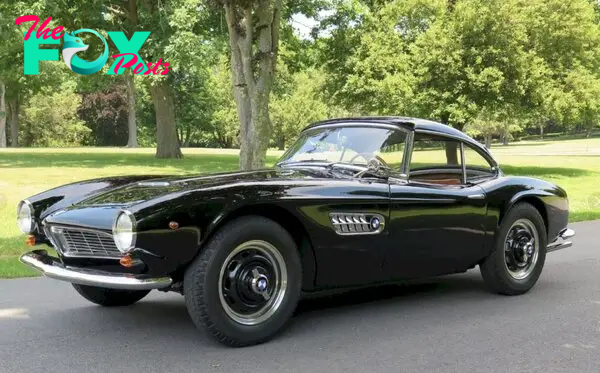
Handling and Suspension
The 507 featured a well-tuned suspension system that provided a balance between comfort and sportiness. The car’s low center of gravity, balanced weight distribution, and responsive steering allowed for agile handling and precise control.

Braking
The 507 was equipped with hydraulic drum brakes, which provided reliable stopping power. While disc brakes were becoming more common during that time, the drum brakes on the 507 were effective and well-suited for its performance capabilities.
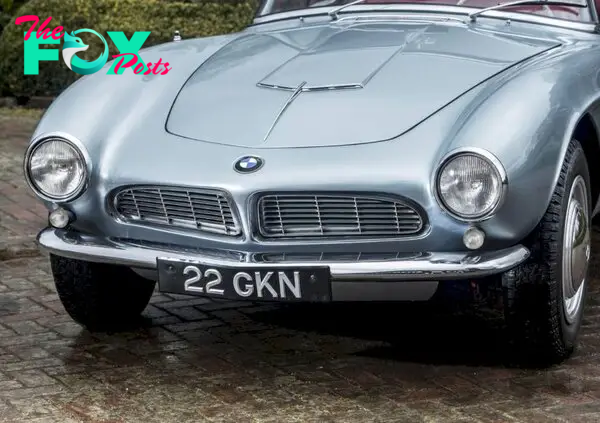
Lightweight Construction
The 507 featured a lightweight body construction, thanks to its aluminum alloy body panels and other weight-saving measures. This focus on weight reduction contributed to improved acceleration, handling, and overall performance.

Driving Experience
The BMW 507 was renowned for delivering a captivating and engaging driving experience. Its responsive throttle, smooth power delivery from the V8 engine, and well-balanced chassis provided a dynamic and enjoyable driving experience, particularly when driven with the top down.
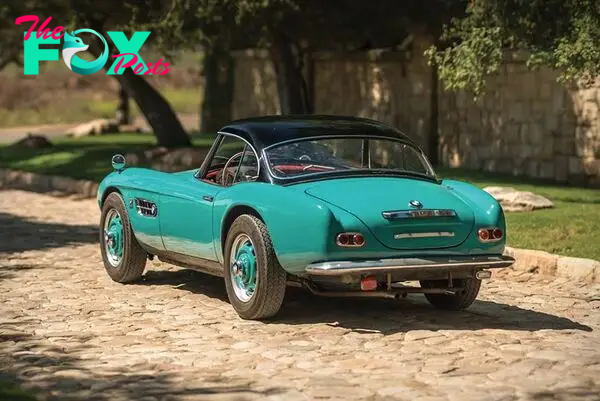
Racing Heritage
While the 507 was primarily designed as a luxury roadster, it did have some racing aspirations. A limited number of modified 507s participated in motorsport events, showcasing the car’s performance capabilities on the racetrack.

4. Convertible Roadster
The 507 was a two-seater convertible roadster, featuring a removable hardtop. It had a low-slung profile and a minimalist interior, focusing on driver engagement and open-top motoring.

5. Exclusivity and Rarity
The 507 was produced in limited numbers, with approximately 254 units built between 1956 and 1959. Its rarity and exclusivity have contributed to its desirability among collectors and enthusiasts.

6. Influential Design
The BMW 507’s design had a significant impact on future BMW models. Its elegant lines and roadster layout influenced subsequent BMW sports cars, such as the BMW Z3 and the modern-day BMW Z4.
7. Famous Owners
The 507 gained popularity and attracted high-profile owners, including legendary musicians Elvis Presley and John Surtees, as well as Formula 1 champion Bernie Ecclestone. These famous owners added to the car’s allure and increased its prominence.
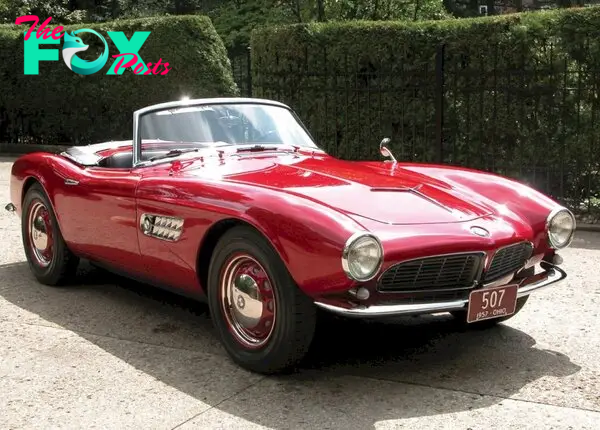
8. Restorations and Value
The BMW 507 has become highly sought-after and valuable among collectors. Due to their limited production and timeless design, well-preserved and fully restored examples can command exceptionally high prices in the classic car market.
The 1957 BMW 507 is celebrated for its beautiful design, potent engine, and engaging driving experience. Its rarity, exclusivity, and iNFLuential design make it an iconic and highly desirable classic car to this day.
-

 Entertainment1h ago
Entertainment1h agoDua Lipa playfully hugs boyfriend Callum Turner during NYC date night
-

 Entertainment1h ago
Entertainment1h agoPauly Shore says he was ‘up all night crying’ after Richard Simmons said he did not approve biopic
-

 Entertainment2h ago
Entertainment2h agoMumbai Crime Branch Detains Actor Sahil Khan in Mahadev Betting App Case
-

 Entertainment3h ago
Entertainment3h agoSatan Could Cry: Peak Of Fight | Dante: Blazing Tempest Gameplay Trailer
-

 Entertainment3h ago
Entertainment3h agoGloble reply as we speak – right here’s the reply and hints for April 28
-

 Entertainment6h ago
Entertainment6h agoArlington High School Wins Big With Tale of Lizzie Borden
-

 Entertainment7h ago
Entertainment7h agoSharon Stone admits to trying to confront her ‘demons’ due to mental health struggles in emotional interview
-

 Entertainment7h ago
Entertainment7h agoPickleball to Eras Tour prep: How Taylor Swift’s skorts helped Popflex go viral
